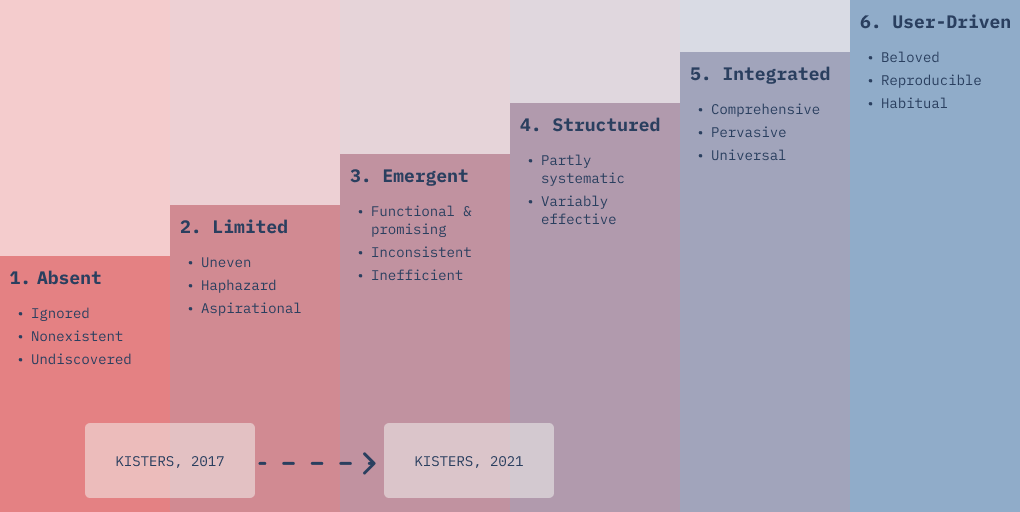The Beginning
KISTERS is a German software company, based in Aachen with over 600 employees worldwide. The business unit water has a development team located in Germany, Spain, China, Australia, and China and has been developing software for the water management industry for the last 30 years.
KISTERS Water has been developing web applications for the last decade or so. This is where I come into the picture. The web applications were being designed on the fly by product owners and developers. This approach, while ok at the start, had led to usability problems and an inconsistent product portfolio. I was hired to fix these problems, as well as establish a design process within the development process.
When I first began, I was faced with several problems, in addition to those mentioned above. As the first designer within the company, there wasn’t an understanding of the design process or how to integrate design work into that of the developers. Design was often seen as a cost factor, and some developers saw my position as a threat to how they’d worked until that point. These problems needed to be solved as soon as possible for the design process to bring any value to KISTERS.
Step 1: Build trust, define a process.
Looking at the Norman Nielsen stages of corporate UX maturity, our starting point was somewhere between stages 1-2 (Hostility towards usability/developer centred user experience). To bring us forward to a point where great usability is integral to KISTERS products, I needed to start two jobs: building trust within the team and defining a first iteration of the design process. The first step in building trust involved showing the development team that their jobs would be made easier. I started with building a design system that could be used out of the box, both by myself as a sketch library and by the developers as dojo components. Building this design system had the immediate effect of improving the styling of our products and creating more consistency within the product portfolio, with a minimum of work for the developers. In addition to creating a design system, I made sure to collect feedback not only from product owners but also from developers from the start. This approach allowed me to implement an iterative design approach and showed the development team that design decisions also took the technical feasibility of the solution into consideration. Not only was I able to build up trust within the development team, but I was also able to quickly learn what effect design decisions would have on development time with our framework.




